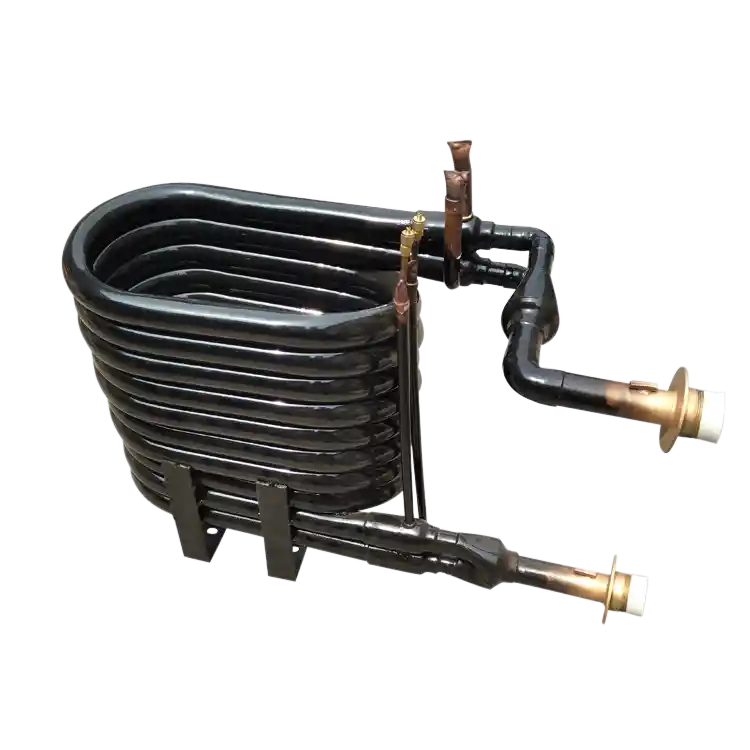Introduction
Tube cutting and deburring are crucial steps in the fabrication of coaxial heat exchangers. This article delves into the intricacies of tube cutting and deburring processes, highlighting their significance in producing high-quality tubes for efficient heat transfer. By exploring the various techniques and considerations involved, manufacturers can optimize the fabrication process and improve the overall performance of coaxial heat exchangers.
1. Understanding Tube Cutting and Deburring
Tube cutting and deburring are essential processes in tube fabrication, ensuring precise tube lengths and removing sharp edges or burrs that may hinder proper assembly and functionality. This section explores the techniques, equipment, and considerations involved in tube cutting and deburring for coaxial heat exchangers.
1.1 Tube Cutting Techniques
Various cutting techniques are employed based on the material, tube dimensions, and production requirements. The following are commonly used tube cutting methods:
1.1.1 Saw Cutting
Saw cutting utilizes a rotating blade or abrasive wheel to cut through the tube. It is suitable for larger diameter tubes and provides excellent cutting accuracy. However, it may generate more burrs compared to other cutting methods.
1.1.2 Laser Cutting
Laser cutting utilizes a high-energy laser beam to precisely cut through the tube. It offers high cutting accuracy, minimal material waste, and reduced burr formation. Laser cutting is ideal for intricate designs and smaller diameter tubes.
1.1.3 Rotary Cutting
Rotary cutting involves the use of a specialized tool with multiple cutting edges that rotate around the tube, gradually cutting through the material. It is suitable for both small and large diameter tubes, providing precise cuts and minimal burr formation.
1.2 Tube Deburring Techniques
After tube cutting, deburring is necessary to remove sharp edges, burrs, or protrusions that may affect the assembly or cause damage to other components. The following deburring techniques are commonly employed:
1.2.1 Manual Deburring
Manual deburring involves using handheld tools such as files, abrasive pads, or deburring knives to remove burrs and smooth the cut edges. It is suitable for small-scale production or when dealing with complex shapes.
1.2.2 Mechanical Deburring
Mechanical deburring employs specialized machines or equipment to remove burrs and sharp edges. Techniques such as tumbling, brushing, or sanding can be utilized to achieve consistent deburring results. Mechanical deburring is efficient for high-volume production.
1.3 Considerations for Tube Cutting and Deburring
Several factors should be considered during the tube cutting and deburring process to ensure optimal results and minimize defects:
1.3.1 Material Selection
The choice of tube material influences the cutting and deburring techniques employed. Different materials may require specific cutting tools or machinery to achieve clean cuts and effective deburring.
1.3.2 Cutting Speed and Feed Rate
The cutting speed and feed rate must be carefully controlled to prevent overheating or damaging the tube during cutting. Proper adjustments ensure smooth cuts and minimize burr formation.
1.3.3 Deburring Methods
The selection of deburring methods depends on the tube material, shape, and production requirements. It is essential to choose the most suitable deburring technique to achieve the desired finish and ensure efficient assembly.
Conclusion
Tube cutting and deburring are critical processes in coaxial heat exchanger fabrication, ensuring accurate tube lengths and smooth edges for optimal performance. By understanding the various cutting and deburring techniques and considering factors such as material selection and process parameters, manufacturers can enhance the quality, efficiency, and durability of coaxial heat exchangers. Implementing appropriate tube cutting and deburring methods streamlines production and contributes to the overall effectiveness of these essential heat transfer components.
| Tube Cutting Techniques | Pros | Cons |
|---|---|---|
| Saw Cutting | – Excellent cutting accuracy – Suitable for larger diameter tubes |
– May generate more burrs |
| Laser Cutting | – High cutting accuracy – Minimal material waste – Reduced burr formation |
– Ideal for smaller diameter tubes |
| Rotary Cutting | – Suitable for small and large diameter tubes – Provides precise cuts |
– May require specialized tools |
| Tube Deburring Techniques | Pros | Cons |
|---|---|---|
| Manual Deburring | – Suitable for complex shapes – Effective for small-scale production |
– Time-consuming for large-scale production |
| Mechanical Deburring | – Efficient for high-volume production – Consistent deburring results |
– Initial investment in machinery required |


